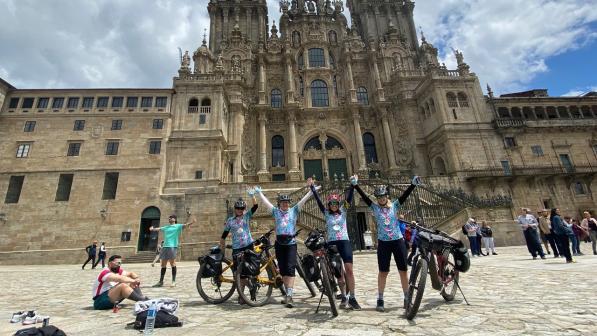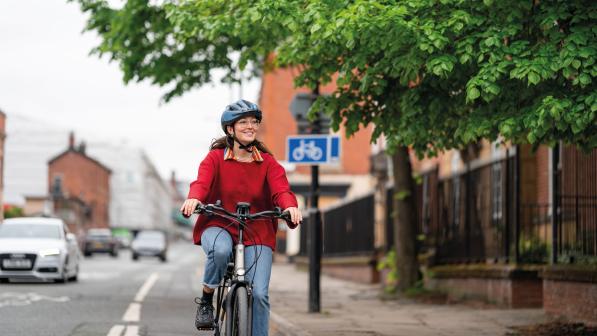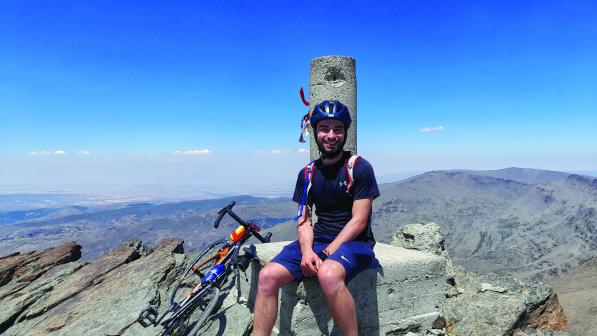Great rides: Cycling along the Way

We were off road in the middle of the Pyrenees, many miles from habitation and 200 metres from the summit of a heavily wooded ridge, when my e-bike ran out of power. We were following a newly designated route for cycling travellers on the Camino Francés.
Having set off from Saint-Jean-Pied-de-Port, we were now on a trackway through spectacular mountain scenery. The views were so wonderful I’d inadvertently been a bit gung-ho with my power usage.
We hadn’t realised the amount of climbing that we would have to do in one day: 1,293 metres (4,200ft) by the time we reached the top. We paused to regroup there, my colleagues having adopted a more prudent pace.
Fortunately, it was then mostly downhill to the monastery and hotel at Roncesvalles, where a beer in the bar was very welcome.
Mountain highs
We were cycling part of the Camino de Santiago from Bayonne in south-west France, then turning north through the Picos de Europa: a 400-mile ride over 12 days in September. At the age of 77, long cycle trips are the activity I like best.
Three of us – me and friends John (74) and Jonathan (62) – crossed France by train, then rode through the Basque Country, Navarra, La Rioja, Castilla y Leon and Cantabria. John and I had electric bikes, Jonathan a conventional bike.

Taking an electric bike abroad has its upsides and downsides. For us older cyclists, it means you can enjoy a good, long bike ride, beautiful scenery and have help with the uphill sections.
The downside is that e-bikes are heavier, so getting them on and off trains can be a task in itself. In some cases, one has to hang them up on bike racks. This definitely takes two people.
I was pleased we were able to cover serious ascents and distances. The secret is to minimise battery use on level ground. If you get up to 16 or 17mph and stay there, you use no battery power since it cuts out at 15mph. Or keep the bike in economy mode as much as you can, then only increase the power assistance on hills when you have to.
There was a lot of climbing – 7,958m (26,109ft), all told. We travelled through some of the most beautiful and remote parts of the Pyrenees. Then, once we turned north, we had some steep ascents through the Picos de Europa. The most challenging of these was over 960 metres but it had stunning, wide-ranging views of valleys and mountains.
In between the big mountain ranges, the riding was very varied. In the sparsely populated area beyond Lugano, west of the Rioja wine region and before we got to Burgos, we had a very wet and windy day.
It was made worse by our decision to come off the rural trackway (to speed things up), only to find ourselves on a very busy road with a headwind and driving rain!

Conversely, the Canal de Castilla, an 18th century waterway that runs roughly north-south, was idyllic. We followed it for 200 kilometres.
Sociable cycling
One of the great things about cycling journeys, whether at home or abroad, is the people you meet on the way when you take time to stop and have a chat. This especially applies to the Camino de Santiago. We met people from Australia, Germany, Holland and England.
The cafés en route are a great place to start up a conversation; there’s a special camaraderie among cyclists on this world-famous journey. You also meet plenty of people on the open road.
There was one chap doing the Camino de Santiago in a wheelchair. Bearing in mind the route is over 700km long, he deserves a medal. We met a couple pushing an old-fashioned pram with their belongings in that instead of two heavy rucksacks.
We also met a couple from Oxfordshire who were cycling for charity on their Bromptons. They had cycled all the way from St Malo; their total journey would be over 1,500km (950 miles)!
One of the most interesting conversations I had was with a hermit monk, who was gently hoping he would convert travellers to Christianity. I’m not religious but I had a most uplifting conversation with him.

It’s not just the people you meet. At Logroño, in the centre of the Rioja wine-growing area, we arrived on the day of the festival of San Mateo. The atmosphere was lively and enjoyable, with impromptu street bands and singers.
You naturally get into conversation with people in the bar where you’re drinking or eating. I even found a bar called Casa Vic! We decided that we definitely had to eat there.
One of the highlights of the trip was coming across a festival rooted in the ancient country traditions of the Picos de Europa. This celebrates the ways people used to live in this still very rural landscape, focusing on the importance of the land and livestock.
I had never seen a bullock up close before. There was much singing of traditional songs way into the night.
For me, mid-morning breaks are essential on tour. In both France and Spain there are plenty of cafés along this route. Apart from the remote parts of the Pyrenees, we could readily buy café con leche and a bocadillo, usually consisting of a roll with omelette and bacon, which was heated up for us in a microwave.
Would I recommend this trip? Definitely! It’s a real adventure that includes mountains, rugged terrain, beautiful scenery, fantastic food and immersion in the culture of different places.



